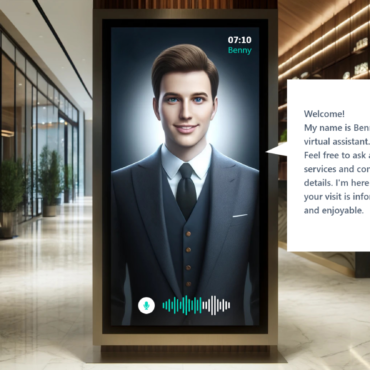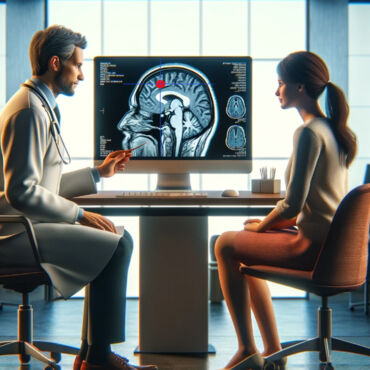The intelligent security and health monitoring system that respects your privacy
Recently, applications for smart homes, smart buildings, healthcare and retail have been developed rapidly. Intelligent building management, security and health monitoring systems are gaining popularity. However, many solutions are based on vision systems, which in many cases may interfere with ensuring the users’ privacy and make them not compliant with GDPR.
To solve this problem, we propose the use of ultra-wideband (UWB) impulse radar sensor. Radar-based systems do not suffer from any privacy concerns. What is more, they show very good performance and accuracy in comparison to vision systems. In following, we explain how it works, how to use it, and what can it be used for.
How can you use an UWB radar? What are the use cases?
There are plenty of use cases, that can benefit from using UWB radar sensors. A variety of information that can be obtained with them allows for numerous applications in diverse industries.
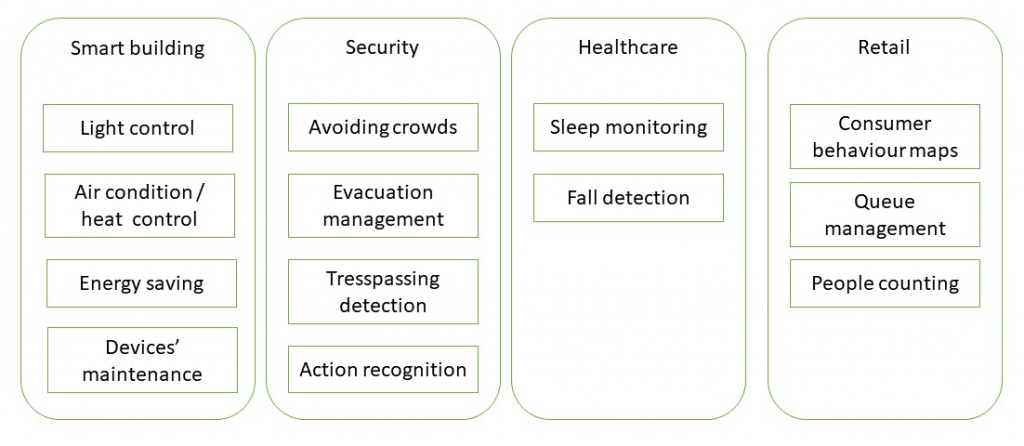
Smart building
Smart building automation gains popularity in both domestic and commercial markets. To implement a smart-automated home or office take advantage of occupancy detection. Use human presence information for:
- smart light control,
- smart HVAC control,
- turning off unused devices,
- starting self-propelled devices like cleaning robots,
- checking the correct use of the equipment, e.g. by counting people in the elevator.
This will not only increase the comfort of residents but also reduce energy consumption, which is very important in the era of rapidly growing demand for electricity.
Using radar sensors allows for a reliable and accurate determination whether an indoor space is being used by someone or not. Unlike standard vision-based occupancy detectors, the radar sensor is sensitive enough to detect even the most delicate movement associated with breathing or heartbeat.
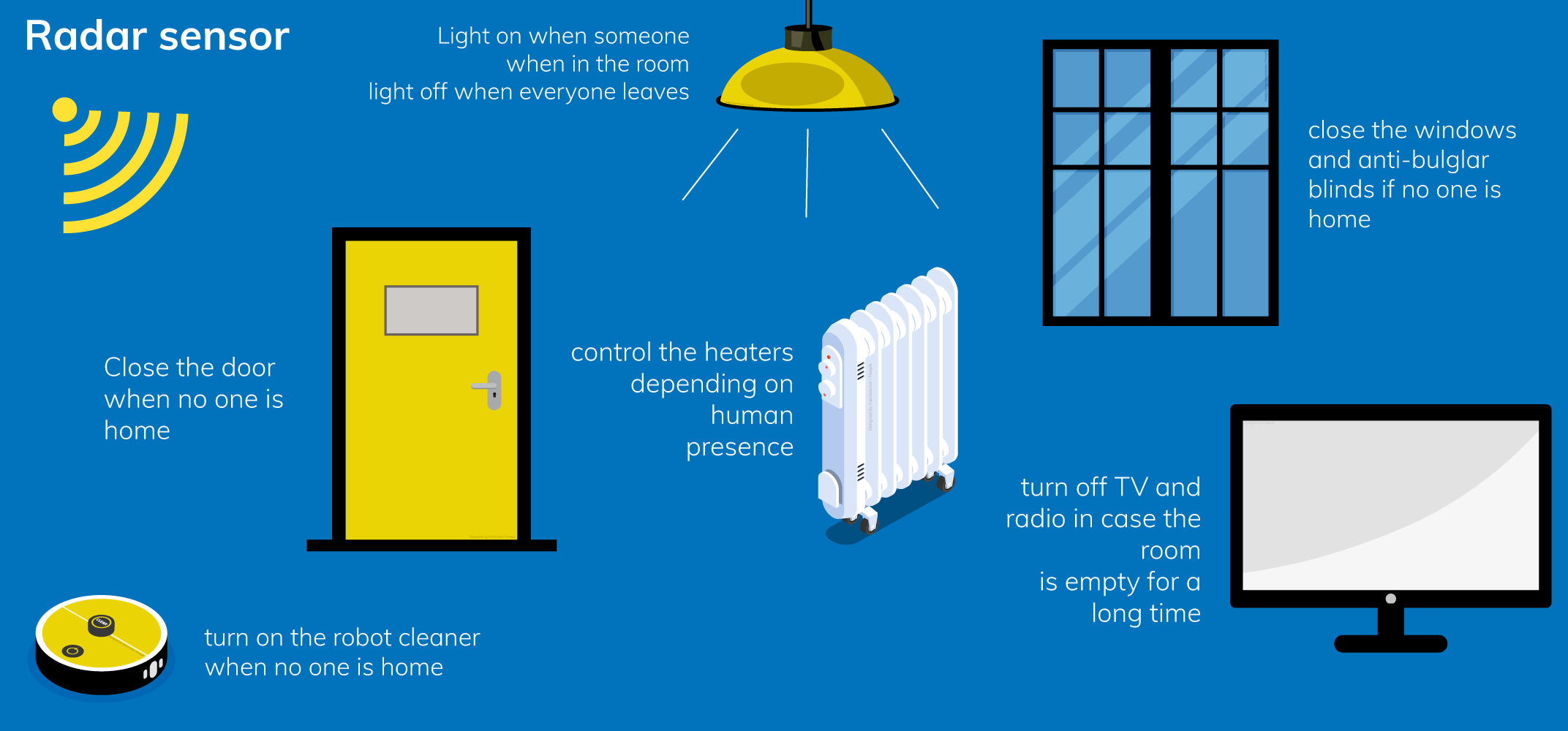
Security
A significant increase in the importance of security can be seen. Automation ensures a higher level of security and human safety in any indoor areas: public institutions, offices, concert halls. Use information about the presence and number of people in the room to:
- prevent too many people from entering rooms – avoiding crowds is extremely important in case of panic, evacuation, and, as it turned out recently, people isolation during an epidemic,
- carry out a more effective and safer evacuation of the building – the clear identification of areas in which people are present allows for avoidance of bottlenecks in narrow corridors and supports emergency services employees,
- detect the violation of prohibited zones – automatic detection of people in restricted or dangerous areas allows raising an alarm and alert security guards,
- perform action recognition – recognize panic, escape, fights, etc. as soon as possible to ensure a quick response from personnel.
Radar sensors exceed the capabilities of vision systems because they allow the detection of people hidden from the camera. It is possible to spot a person hidden behind a thin obstacle, like curtains, sheets, or fence.
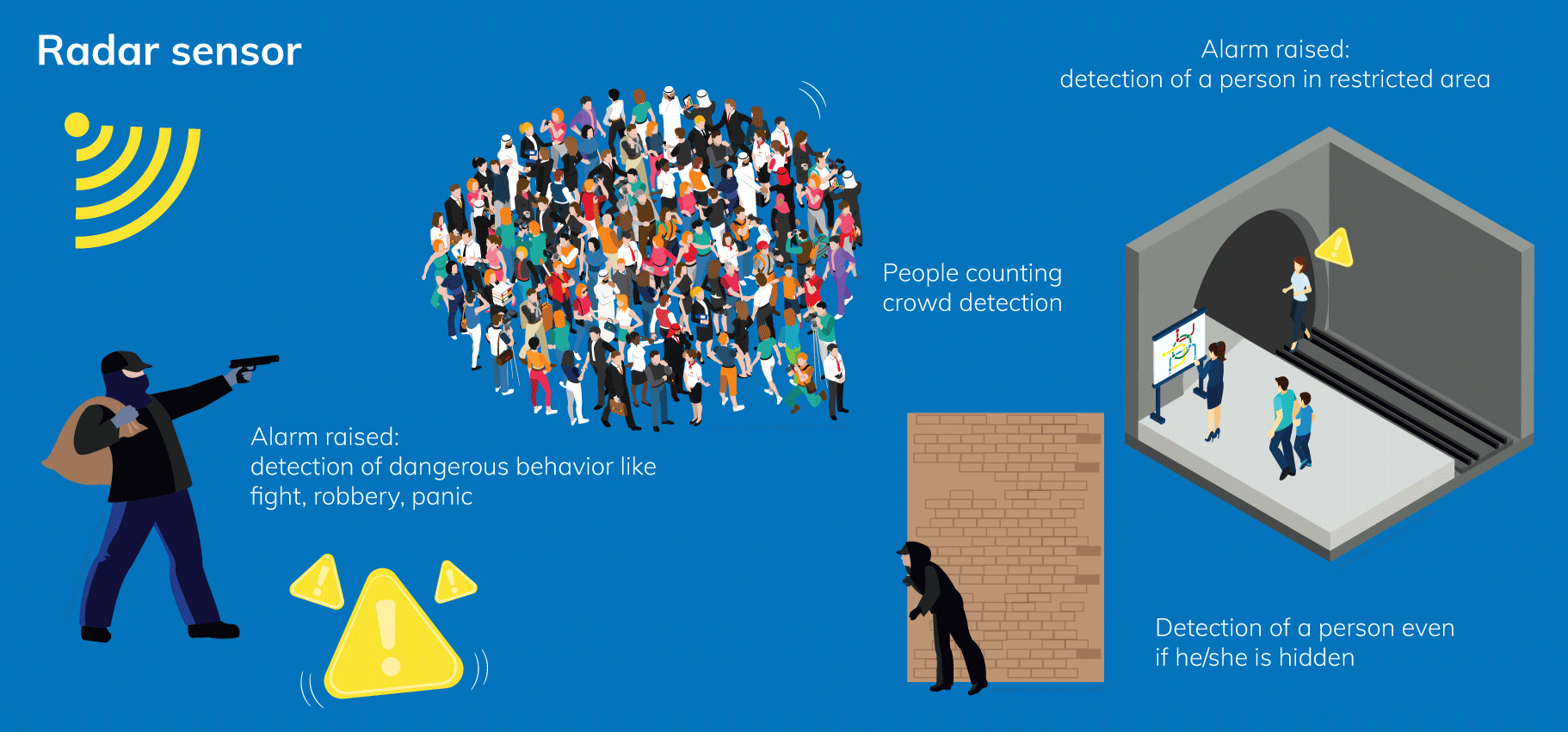
Healthcare
Automation is also entering the healthcare market, relieving medical staff. Analysis of a person breathing with a respiration sensor can be used for:
- sleep monitoring – can be easily used to rate the quality of your sleep, which is essential for a human’s immune-, nervous-, skeletal-, and muscular system,
- fall detection – raise the alarm and inform family or household members about a falling person.
Radar-based sensors are extremally sensitive – they can detect less than 1 mm movement, and, what is more, can penetrate quilts, blankets, and clothes, which makes them perfect for respiration and vital signs monitoring.
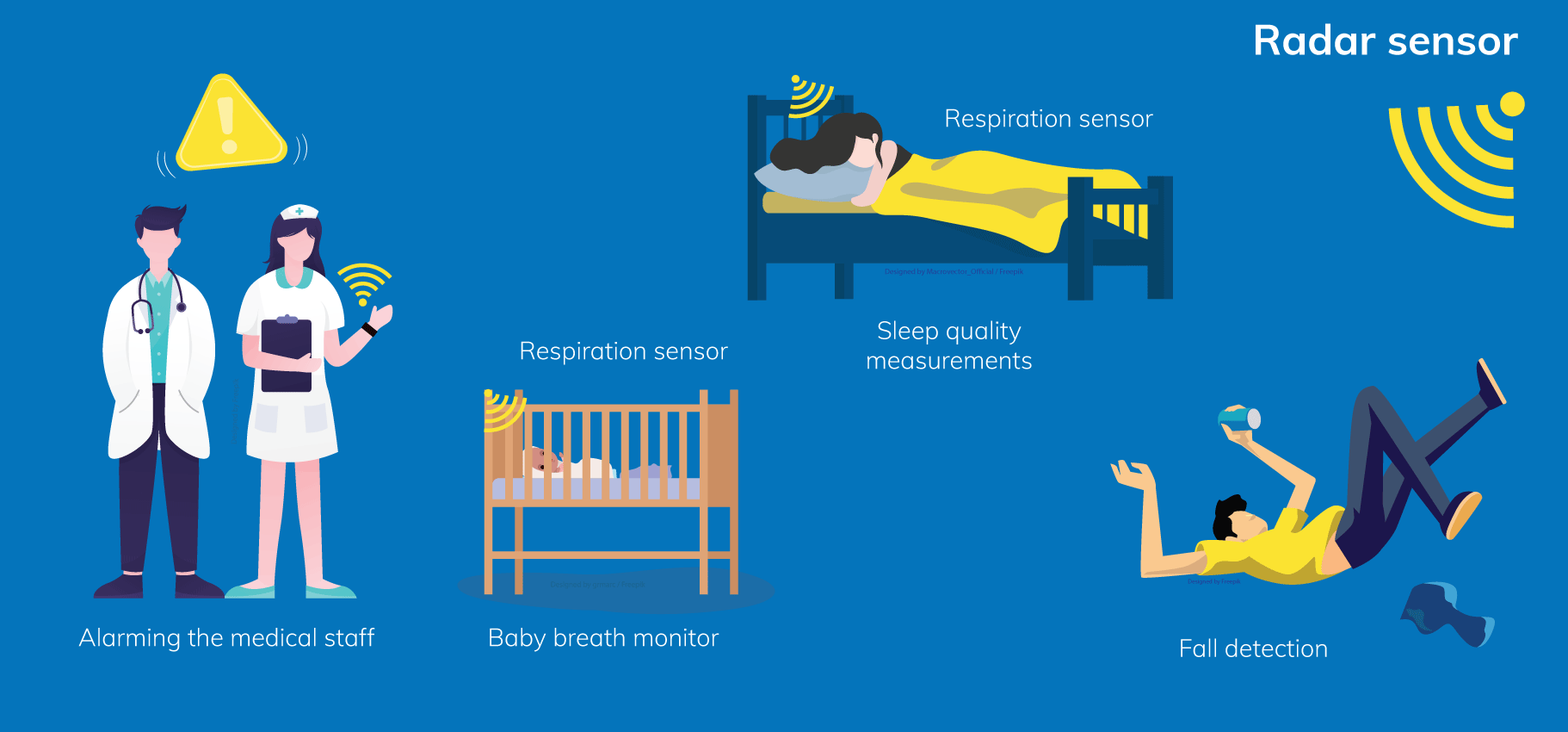
Retail
Smart retail solutions in shopping centers and malls are usually based on CCTV system. However, consumers are increasingly paying attention to the way their data is processed. There are hundreds of people in malls every day, and protecting their image is a major challenge. Fully anonymous information obtained by radar presence sensors enable:
- generating consumer behavior maps, so-called heat-maps – improve store design, optimize popular areas, measure the success of promotional campaigns,
- minimizing the time customers append at checkout – queue management helps to improve customer satisfaction and prevent abandonment,
- people counting – detect busy hours, when stores generate the most traffic and have the most significant sale opportunities or optimize the number of your staff.
Radar-based sensors, unlike vision systems, can detect even the person standing still, e.g. when choosing products from a store shelf or standing in the line to cash register.
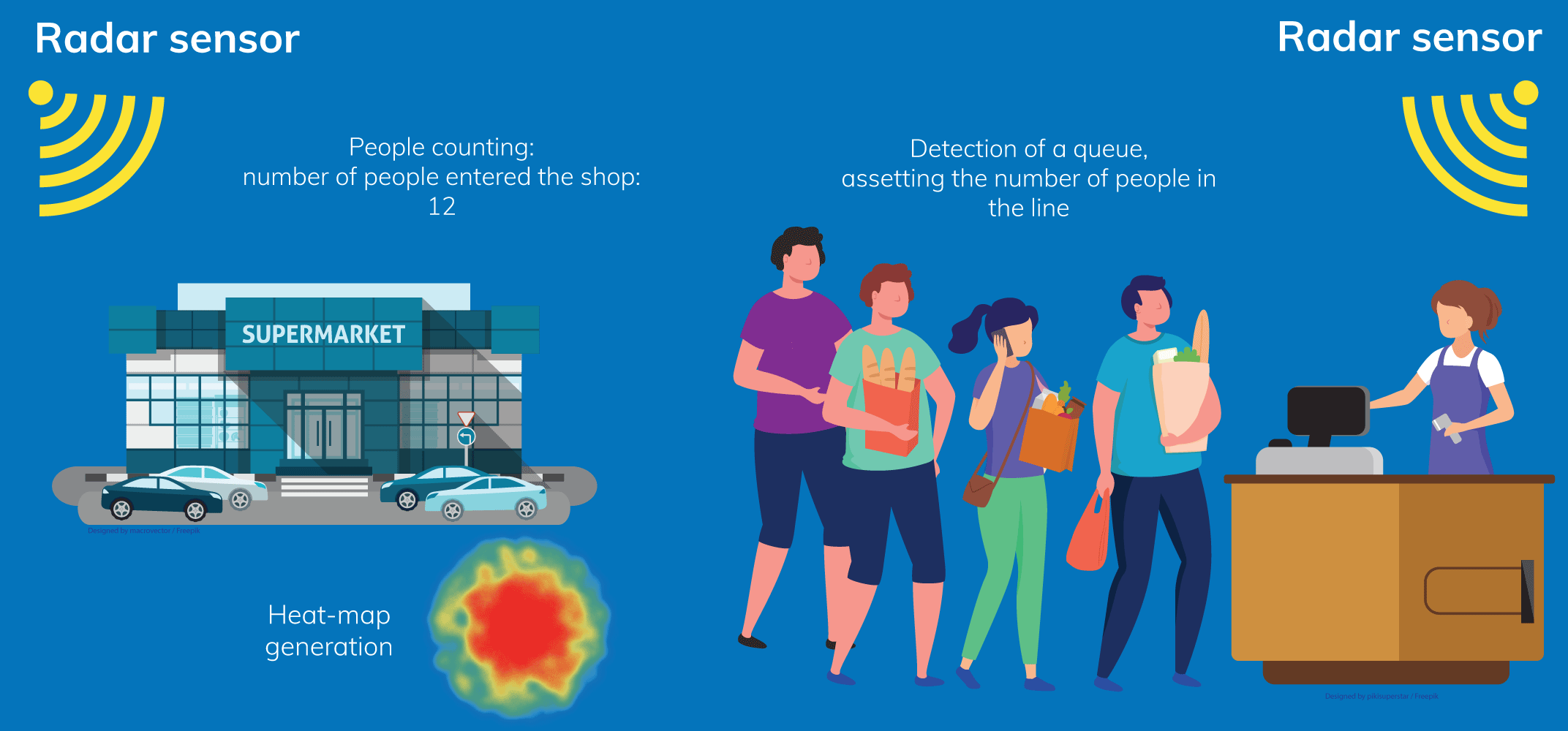
Wir freuen uns auf Ihren Kontakt.
You have an idea how AI can support you in your company or you
have a question about the UWB radar sensor?




